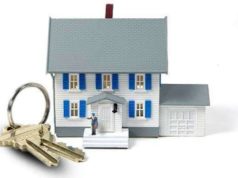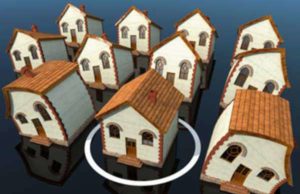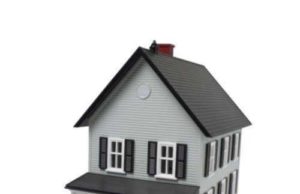
Introduction
Building codes are fundamental requirements that govern the construction and renovation of buildings. The primary objective of building codes is to ensure safety, enforceable standards, and to create healthier, durable, and sustainable living spaces. However, building codes are limited by encumbrances that can impact the construction of buildings.
Encumbrances are limitations that restrict the use or transfer of real property. They are usually created by law, and they can be imposed by various entities, including government agencies, individuals, or corporations. Building encumbrances can be classified into regulatory and non-regulatory.
Regulatory encumbrances are legal restrictions imposed on the construction and use of a property by government agencies. On the other hand, non-regulatory encumbrances are private agreements or limitations that restrict the use or transfer of real property, such as easements, covenants, and deed restrictions.
This article will discuss various types of encumbrances that affect building codes. We will explore how these encumbrances impact building codes and their implications for property owners and developers. Furthermore, we will examine the newest codes implemented by the government that reflect on encumbrances.
Types of Encumbrances that Affect Building Codes
Easements
An easement is a non-regulatory encumbrance that allows someone, usually a utility company, to use the land of another person for a specific purpose. These purposes can include using the land for the installation of cables, power lines, water lines, or gas lines. An easement can significantly limit the use of land, especially when it comes to building codes. Building codes may require setback distances or specific drainage systems that cannot be installed because of an easement. Easements can reduce the value of the property and can prevent the construction of buildings that would otherwise be permitted.
Covenants
Covenants are non-regulatory encumbrances that can limit the use of real property by placing restrictions on how a property can be used. A covenant can restrict the height of buildings or dictate the aesthetic appearance of the building. For example, some covenants may restrict the use of certain materials, such as vinyl siding or metal roofs, in new construction. Covenants can also reflect zoning regulations, which are set by the local government. The importance of covenants is that they can be imposed by a homeowner’s association or a neighborhood group or even the builder’s developers. This will greatly limit the design of new building conversions and new building constructions.
Deed Restrictions
Deed restrictions are non-regulatory encumbrances that are placed on the transfer of real estate ownership. The deed restrictions will limit or define the use of the property for future owners. Deed restrictions can significantly curtail construction methods, materials, and even the purpose of the property. For instance, a deed restriction may prohibit the construction of a commercial building on residential property and vice versa. A deed restriction usually goes along with covenants and restrictions, but it more restricts the property’s use and is not voluntary in that regard.
Zoning Regulations
Zoning regulations are an example of regulatory encumbrances. According to the National Building Code of Canada, zoning regulations are a “”function of municipal government powers to regulate land use.”” Zoning regulations divide communities into various zones with specific designations, such as commercial, residential, and industrial. The minimum lot size, height restrictions, and maximum floor area ratios govern each zone. Zoning regulations dictate the exterior aesthetics, fire codes, setback distances, and use of the property. Building codes must conform to zoning regulations. It is important to note that zoning regulations can be fluid and change depending on the city’s population density, development needs, and circumstances.
Building Codes
Building codes are regulatory encumbrances that stipulate the minimum requirements for the construction of new buildings or renovation of old buildings. Building codes vary, and they typically encompass electrical, plumbing, fire, and structural aspects of buildings. Other considerations for building codes involve accessibility regulations. Building codes also protect the health and safety of building occupants; for example, building codes often relate to ventilation systems. Most importantly, building codes serve as constant guidelines for every building in the municipality or the state.
How Encumbrances Influence Building Codes
Building projects must conform to various encumbrances. Encumbrances can influence building codes by narrowing the scope of what developers, architects, or builders can do with real property. As noted earlier, encumbrances come in different forms that have significant implications on the design, cost, scope, and quality of a building project.
For example, zoning regulations and deed restrictions can limit the height and floor area of a building. Building codes may require that a structure be a minimum height to allow for proper ventilation or that a building comply with minimum lighting regulations. Easements can limit where structures can be built because of setbacks that must be adhered to. Covenants can regulate what materials can be used in the construction process.
Each of these encumbrances is significant in the construction process because they impact the overall design of the building. For example, a building constructed in an area affected by covenants or deed restrictions must use specific materials and follow certain design standards that are not necessarily required by building codes. These limitations could affect the quality of the building, the timeline, and the whole project’s costs. Multiple regulatory and non-regulatory encumbrances could cause extensive undue burdens and make it difficult for the building site to be chosen.
Building Codes vs. Encumbrances
Building codes protect the public’s health, safety, and welfare, while encumbrances govern the use and transfer of real property. Building codes regulate the overall construction process to ensure that each building is safe for occupants, reduce structural failures, and limit the spread of fires, among other benefits.
Encumbrances, on the other hand, limit the use of land by controlling the design, materials used, and intended purpose of the property. In contrast to building codes, these controls limit the owner’s choices of design, aesthetics, materials, and use. Encumbrances are not primarily concerned with safety; instead, their focus is on the restrictions of the property and how it can be used or transferred by future owners.
Implications of Building Encumbrances
The impact of encumbrances on building codes has important implications for property owners, developers, and municipalities alike. Encumbrances limit the way a property can be used or transferred, making it less attractive to buyers, investors, or developers. Moreover, encumbrances can affect the housing crisis in urban areas by reducing the availability of land available for building and residential development.
When it comes to building codes, encumbrances such as zoning regulations, covenants, and easements affect construction costs, timelines, and the design of the building project. Regulations such as floor area ratios set out in zoning regulations, limit the building project’s size, reducing the number of units that can be constructed. Covenants and deed restrictions impose additional constraints on the design process, which may increase the cost of construction and reduce the building’s attractiveness to tenants.
Conclusion
In summary, encumbrances are limitations that restrict the use or transfer of real property imposed by various entities, including government agencies, individuals, or corporations. These encumbrances can limit the scope of a building project or reduce its value. Building codes regulate the construction process to ensure that each building is safe for occupants and to limit the spread of fires, among other benefits. Encumbrances and building codes impact property owners, developers, and municipalities in various ways and even limit affordable housing in high-density areas. It is essential to understand these implications and work to find common ground so that we can continue to build safer and comfortable environments for society.
Mainly, building codes related to the overall safety of a building/non-building structure, and the objects in and around it. They can range from an object demoting the safety of a passageway in a public building, to an added wing of a house that violates the building codes set by the town.
The items included in building codes for specification encompass certain things such as fire codes, lighting and safety codes, mandates for structural safety against forces of nature, and even structures surrounding the buildings. The fire codes are commonly regulated by the local fire department in regards to the building size and structural makeup. For instance, in an office building of 3 floors, the Fire Marshall will set a limit of occupants that can be inside at a certain time. This can include employees, clients, visitors, etc.. and having surpassed the limit and getting caught can result in a fine in direct violation of that specific code.
The fire codes can also relate to obstructions in hallways and stairways that could prevent people from safely and quickly exiting the building in the event of a fire. Also, they can implement a regulation stating how many fire extinguishers, hoses, and smoke detectors must be placed in the building. This is to guarantee quick access to any of these countermeasures, and also to have the detectors pick up smoke in every possible area before its too late. Concrete or brick walls in these office buildings must also be ‘fire-stopped’ (such walls are created when holes are drilled to run wiring or plumbing pipes) in almost every town, city, or state.
This refers to the overall makeup of that wall and its fire retardation value. The area around these pipes or wires must be sealed using a fire-stop sealant, usually red in color, to promote the ability of the wall to prevent fire from traveling through the holes that were drilled. This reinforces the wall to its fire retardation capabilities, prior to the risk that the hole created.
In certain locations, natural disasters are hard to avoid, therefore the houses or buildings are constructed, must meet the required building codes of that area to withstand such events. Such weather events can be hurricanes, earthquakes, or tornadoes which can destroy a structure. In Florida, cities on the coast line usually have building codes that require the homeowners to install hurricane safe windows and or shutters.
These can prevent the destructive winds of a hurricane from shattering windows, and weakening the structure of a house-making it more vulnerable to being destroyed. In California, where earthquakes are commonplace, new buildings have to install seismic safety structures underground to protect the building. These reinforced foundations allow the building to become resilient and rubber-like in movement during earthquakes, rather than breaking apart and collapsing.
Overall, building codes protect the people that are inside, outside, and around the building by every means possible. Furthermore, there are many more building codes, which refer to building use, traffic around the structure, and proper functionality of it.























